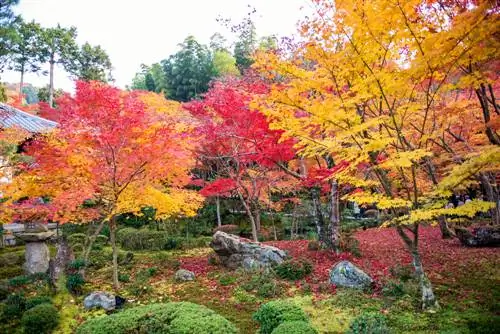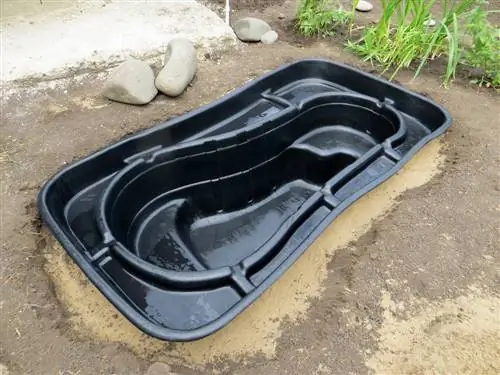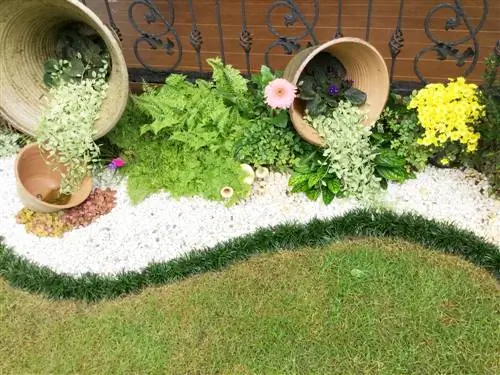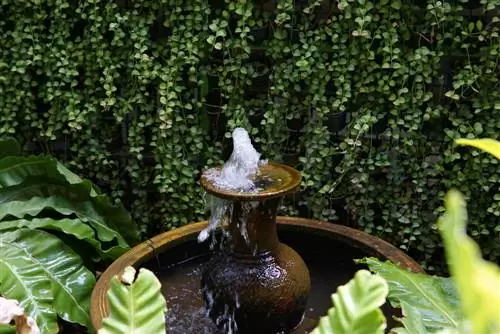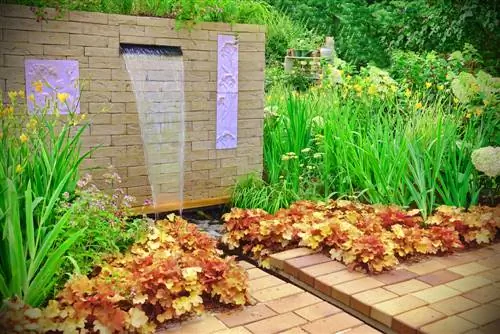- Author admin [email protected].
- Public 2023-12-16 16:46.
- Last modified 2025-01-23 11:22.
The ginkgo or fan leaf tree (Ginkgo biloba) is something very special: Due to its unusually robust nature, it is probably the oldest tree and has survived for millions of years and is now used as an ornamental tree in parks and gardens around the world.
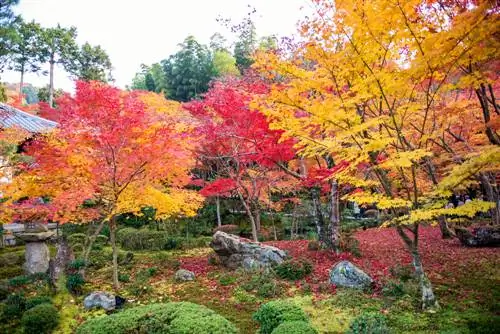
How to use ginkgo in garden design?
Ginkgo trees are suitable for large gardens and parks, but also for small areas thanks to cultivars that remain small. They are ideal for designing Chinese or Japanese gardens and harmonize with plants such as jasmine, magnolias, grasses, rhododendrons and Japanese maples.
How can the ginkgo be used in garden design?
The ginkgo can be used excellently in garden design for various reasons: As a so-called climate tree, the ginkgo is quite robust in the face of changes caused by climate change. It is also insensitive to diseases and pests and also looks very attractive thanks to its growth habit and specifically shaped foliage.
Ginkgo biloba grows up to 20 meters high and forms awide, spreading crownas it ages. Although it is quite tolerant of pruning, its growth can hardly be limited by pruning measures. Therefore, you should only plant it in alarge garden or park.
Is the Ginkgo also suitable for designing small gardens?
However, the ginkgo can also be used for gardening small areas or front gardens: The “living fossil” is now also available insmall cultivars, which are great in small gardens or Can even be cultivated in pots.
If you are looking for a small tree or shrub, you should take a look at theseVarieties:
- 'Baldi': upright, spherical growth, up to two meters high
- 'Troll': Dwarf ginkgo with a height of only 80 centimeters, bushy, stocky growth
- 'Mariken': small tree up to 150 centimeters high with a spherical crown
- 'Menhir': narrow, columnar growth, height up to six meters
Are there any ideas for designing a Chinese garden?
If you want to create a Chinese-looking garden with ginkgo, it's best to use these ornamental plants:
- True jasmine (Jasminum officinale)
- False jasmine (also pipe bush or scented jasmine, Philadelphus)
- Winter jasmine (Jasminum nudiflorum)
- Almond bush (Prunus triloba)
- Garden Hibiscus (Hibiscus syriacus)
- Magnolias, e.g. B. Star magnolia (Magnolia stellata)
- Peony (Paeonia officinalis)
Don't miss out onGrass, for example bamboo (it's best to use Fargesia species as they don't form runners), miscanthus (Miscanthus sinensis) or pampas grass (Cortaderia). AGarden pond, filled with goldfish and planted with lotus (Nelumbo), also belongs in a Chinese garden.
Is the ginkgo suitable for designing a Japanese garden?
Of course you can also use the ginkgo to create a Japanese-style garden. Water should not be missing here either, for example in the form of agarden pond(perhaps even with koi in it) or an artificial stream. Rhododendrons, magnolias, azaleas, ornamental cherries, conifers andJapanese grasses such as Japanese mountain grass (Hakonechloa macra) or Japanese sedges (various species, Carex) also fit in well here.
The Japanese garden also looks attractivetypical Japanese plants like
- Flower dogwood (Cornus kousa)
- Fan maple (Acer palmatum)
- Viburnum (Viburnum)
- Shadow bell (Pieris japonica)
- Fruit skimmia (Skimmia japonica)
- Magnificent spar (Astilbe japonica)
also in combination with a ginkgo tree.
Tip
Make sure you choose the right location
However you want to use the ginkgo tree for garden design, make sure it is in a suitable location. The ginkgo prefers a partially shaded rather than sunny spot in the garden, and the soil should be slightly moist and well-drained.

